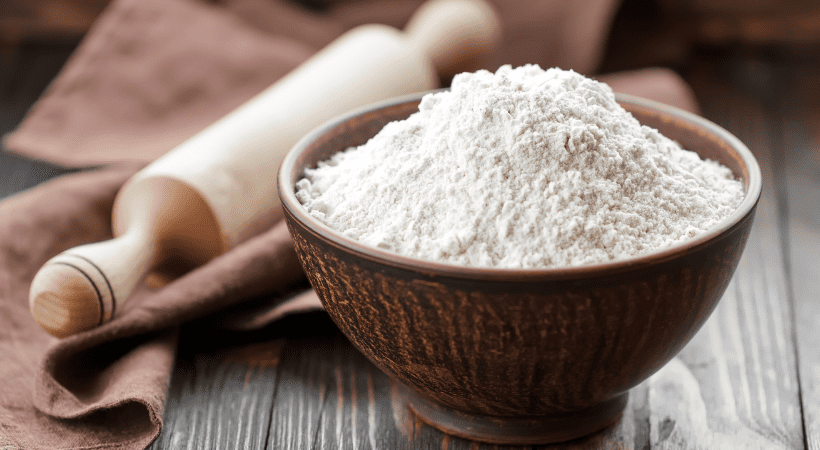Food Additives Legislation & Labelling Advice
Food Additives Legislation & Labelling Advice
When it comes to labelling food products, it’s imperative for manufacturers and retailers to be aware of the legal requirements regarding food additives. Food additives play an important role in ensuring the safety, nutritional value and overall quality of the food we consume every day.
This guide explores the complex world of food additive regulations, outlining the current UK legislation and providing guidance to ensure that your food labels are compliant.
Table of Contents
What are Food Additives?
Food additives are substances that are added to food products throughout production to provide various technological functions such as flavour, colour or stability of the product.
What’s the difference between a food additive and a food ingredient?
The terms food ‘additives’ and ‘ingredients’ refer to different aspects of what goes into food, and they serve different purposes. For instance, although honey, sugar and egg yolks all have a technological function in various food products, they are not considered additives because they are usually recognisable components that contribute to the taste, texture or nutritional value of the food, and are often consumed on their own. Instead, they are referred to as ingredients.
On the other hand, additives are not typically consumed by themselves or used as primary constituents of a meal. Instead, they are used to enhance or preserve the qualities of the food, often without adding nutritional value.
Food additives may be used to:
- Preserve the nutritional quality of the food
- Enhance its shelf-life or maintain quality
- Improve its appeal to consumers through enhanced flavour, colour or texture
- Make the production and storage of food possible
Why Does the Food Industry Use Additives?
Whilst the foods we prepare at home are generally eaten shortly after preparation, foods sold in shops and online often need to remain stable and attractive for longer. Additives play a key role in global food production to help meet consumer demands for flavour, safety and freshness. By improving the stability of food, they also contribute to reducing food waste which is a major sustainability concern.
Food additives may conjure up a picture of a synthetic chemical to many. However, this isn’t always the case as many additives are derived from naturally occurring substances, such as lecithin from soy and carrageenan from seaweed. In fact, consumers intentionally add additives to their home cooking, such as jam-makers adding pectin (E440) to ensure a good set to the jam. No matter their source, safety is always of the utmost importance in the mind of the regulator when approving the use of additives in food.
Developments in food science have led to a more frequent use of additives in modern food production. There are now hundreds of different substances used as food additives and many more used as flavourings, all of which are regulated for the safety of consumers.
Below, we explore some of the most common types of food additives.
Different Types of Food Additives and Their Uses in Foods
Colourings
Colourings are additives that are used to restore or bring out the colour in a food. They can be natural, like beetroot red (E162) or synthetic like tartrazine (E102).
Tartrazine is one of the six colours linked to hyperactivity in some children. After research was conducted and funded by the Food Standards Agency, and reviewed by the European Food Safety Authority, amendments to additive regulations were introduced to require foods containing it to carry a specifically worded warning to this effect.
There are other food additives that require warnings such as Azo dyes, which can cause allergies in sensitive individuals, and Aspartame, which can be harmful to people with phenylketonuria (PKU), a rare genetic disorder.
Preservatives
Preservatives prolong the shelf life of food by protecting against deterioration caused by microorganisms. Common examples include calcium propionate (E282), which is commonly used in bread, and potassium sorbate (E202) used in vegetable spreads/margarine.
Antioxidants
Antioxidants prevent the deterioration of foods by the chemical process of oxidation. This includes the prevention of off flavours being formed in foods by the oxidation of fats and oils in the food using tocopherols (E306). Similarly, the application of ascorbic acid (E300) can be used to prevent browning by inhibiting oxidative reactions. Ascorbic acid is more widely recognised as Vitamin C by consumers.
Sweeteners
Sweeteners are additives used to create a sweet taste in food. Typically, non-nutritive sweeteners such as aspartame and sucralose are used to produce a sweet taste without the additional calories found in sugar and naturally sourced sweeteners such as honey.
Sometimes several non-nutritive sweeteners may be used together or with sugar to achieve a particular flavour or increase the overall level of sweetness synergistically.
Emulsifiers
Emulsifiers enable oil and water to mix together and maintain the emulsion, ensuring stability with no separation of the water and fat portions in the product.
Emulsifiers are commonly used in mayonnaise, ice cream and chocolate. Examples include mono- and diglycerides of fatty acids (E471) and soy lecithin (E322), both of which are found in ice cream, ready-to-use icings and instant hot chocolate.
Flavour Enhancers
Flavour enhancers are used to boost the existing taste of a food without providing their flavour (i.e. they taste of nothing but enhance the existing flavour of the product). The most common (and contentious) example is monosodium glutamate (MSG, E621), found in crisps and savoury noodles.
Food Additives Legislation in the UK
According to food additive legislation, all additives must be approved before they can be used in the UK. For a food additive to be approved for use, it must be considered advantageous to the consumer. For instance, if it enhances flavour, extends shelf-life or improves the quality of the food.
Extensive assessments of scientific and technical reports are required to ensure an additive’s safety, technological need, and that its use will not cause the consumer to be misled. Each additive that is approved is permitted for use in certain foods and at a maximum predetermined level.
These regulations help to ensure that additives are only used in products that benefit from their presence, and that presence is kept to the minimum required to achieve the desired results.
The list of the approved ingredients and E numbers that can be used in food products are stated on the Food Standards Agency’s website and in the retained EU Regulation 1333/2008.
What is an E-Number?
Additives are often referred to by their E-numbers as illustrated throughout this guide. The E-number classification system was created as part of a drive to have a single list for each functional group of additives with the ‘E’ intending to represent to consumers that the permitted additives were classed as safe in the EU. It is recognised globally, and the International Numbering System (INS) for Food Additives which is found in the Codex Alimentarius is based on this. The system was first used in 1962 for colours, and was subsequently used in 1964 for the directive on preservatives, 1970 for antioxidants and in 1974 for emulsifiers, stabilisers, thickeners and gelling agents.
Harmonisation of these additives was the next goal as part of the effort to create the Internal Market in the EU. Harmonisation of additives occurred during the late 1980s and the early to mid-1990s.
Do you Need to Declare Additives on Food Labels?
Yes, it is mandatory for food additives to be listed on the ingredients list when present in a food product, either by their name or E number, to abide by food additive labelling regulations.
The additive’s purpose or function within the product must also be stated. Examples of such functions are acids, acidity regulators, anti-caking agents, emulsifiers, gelling agents, humectants and raising agents, amongst others.
To learn more about which ingredients need to be declared on a food label, please refer to our guide:
How to Label Food Additives in the UK
Labelling with E-Numbers or Full Additive Name
Although the additives regulations were put in place with the aim of ensuring citizens’ safety, their appearance on food labels can deter consumers with mandy perceiving shorter ingredient lists, with as few additives as possible, as more appealing – a concept known as a ‘clean label’. E-numbers have raised particular concern, with consumers questioning why manufacturers are ‘hiding’ what is in their food by using codes, rather than viewing the codes as a tool that was actually meant to improve transparency.
In the UK, it is common practice to use the additive’s full name on a label, as these can provoke fewer negative perceptions and are generally preferred by consumers. However, for more chemical-sounding and less familiar additives, E-numbers are often used. Additionally, space constraints can demand the use of E-numbers as these can be much shorter than their full-name counterparts.
Ideally, the product label should reflect familiarity to the consumer. We also recommend that a brand approaches the labelling of additives consistently across its product portfolio to improve understanding.
If additives have been used in a food product, you must ensure that they are only used in legally permitted foods and quantities, relevant to the markets of sale (as different countries have different approaches to regulations) which we can advise you on at Ashbury.
To support in communicating to consumers that additives are not always as scary as they look, some brands have taken to including additional information about additives alongside the legal terminology on their labels that simplifies this into more recognisable language. For example, ‘Ascorbic Acid, a form of Vitamin C, also found in citrus fruits’. This is a helpful tactic to educate your customers, but be careful with compliance, as you don’t want to mislead the consumer into thinking your product contains citrus fruits.
How to Label Sulphite Additives for Allergic Consumers
Additives that may cause allergic reactions or intolerances, such as sulphites, must be highlighted in the ingredients list if present above pre-set levels and declared even when sold loose or in non-prepacked foods. For Sulphur dioxide (E220) and sulphites (E221 to E228) they must be labelled when present above 10 mg/Kg or 10 mg/litre. This is calculated as the amount of sulphur dioxide in the finished product, as it would be consumed.
Should the allergen be present in a product that is exempt from carrying an ingredient list, then a ‘contains’ statement should be used, unless the name of the product includes the allergen, which in the case of sulphur dioxide or sulphites, is not likely to happen.
If sulphur dioxide or sulphites are present as a preservative in one of the ingredients of a food, for example, in the apples in the filling of an apple pie, then its presence as an allergen must be indicated on the food label. The requirement is set out in retained Regulation (EU) 1169/2011, Annex II, 12, but labelling consequences of this may not be immediately obvious. This is where a labelling expert can ensure your food label is compliant.
The process of correctly labelling food products can seem complicated, given the many different rules and guidelines to follow. However, it is essential to keep consumers informed on the contents of their food and to ensure your food labels are compliant. For more information please refer to our detailed guide:
Which Food Additives are Banned in the UK?
Some food additives are banned in the UK because of their potential to cause harmful effects if consumed. For instance, if they are carcinogenic (e.g. Sudan dyes), lead to hyperactivity in children (e.g. Southampton six colours) or have nutritional consequences (e.g. side effects such as stomach cramping and other gastrointestinal issues caused by the additive Olestra).
Countries do not always agree on the safety of additives. This is the case with titanium dioxide, which is used to produce a white colour in some bakery products and confectionery. It is banned in the EU, but after consideration, the UK decided to keep it legal.
In November 2022, the European Court of Justice annulled the classification of titanium dioxide as a carcinogen by inhalation, as inconsistencies in the toxicity findings were noted. France decided to appeal the annulment, which means that at the time of writing, titanium dioxide cannot be used in foods in the EU and Northern Ireland.
Potassium bromate has been shown to cause cancer in some animals, so it is not permitted for use in foods in the EU, UK, Canada and other nations. The US authorities judged that this effect was not evident when the animals were fed bread containing the additive, so it may be added to bread in the USA, where it acts as a dough strengthener, flour treatment agent and leavening agent.
If a company is caught selling foods that contain banned additives in the UK, this could result in serious legal repercussions. It cannot be assumed that because an additive is permitted in one country, that it will be allowed in another.
Some specific examples of foods that are banned in the UK include:
- Some food colourings (including yellow no. 5 and 6, and red no. 40)
- Potassium bromate
- Sudan dyes
- Certain drugs used on animals, such as bovine growth hormone.
- Brominated vegetable oils
- Chlorine-treated poultry
- Rhodamine-B
- Azodicarbonamide
- Olestra
- Auramine
Support with Food Additives Legislation and Labelling
For food businesses, it is imperative that they consult the relevant regulations to ensure that the use of an additive in a particular food is permitted, and also that it is used in quantities below the maximum permitted level.
Understanding and navigating food additive legislation and labelling is challenging. At Ashbury, our expert team is here to help. Our industry-wide experience enables us to provide sound, risk-based guidance on the complexities of food labelling compliance to ensure your products meet the required standards in the UK and globally.

My background in Food Science and Marketing means I have a unique combination of commercial creativity and technical food manufacturing experience. My ambition is to bring clarity to the complex world of compliance through the simple and eye-catching communication of Ashbury's services.
Next reads
Changes to England’s Bread and Flour Regulations: What you need to know
Natasha Allergy Research Foundation: Clinical Trial Update, May 2024
Nutri-Score Food Labelling: How & When to use it
‘Use By’ & ‘Best Before’: Food Date Label Requirements Explained
Keep up to date with our latest insights
Subscribe to our mailing list to stay in touch with the latest news, insights and updates from Ashbury






